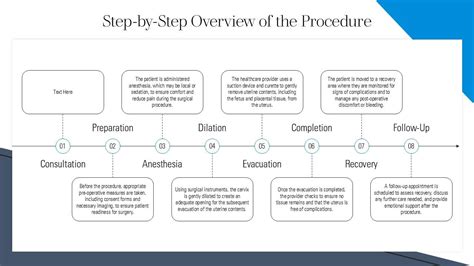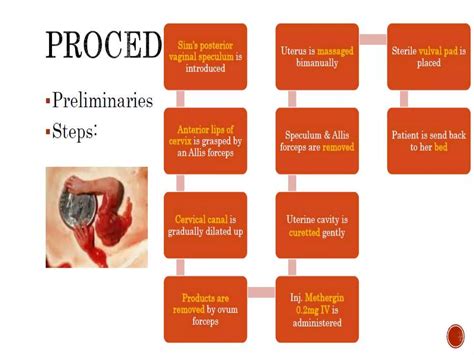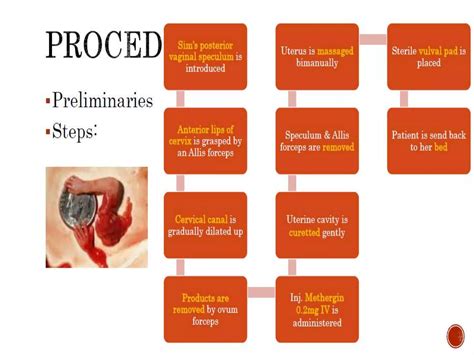Intro
Master 5 D&E procedure tips for a successful dilation and evacuation experience, including preparation, surgical methods, and post-op care, ensuring a smooth and safe process with minimal complications and optimal recovery.
The dilation and evacuation (D&E) procedure is a safe and effective method for terminating a pregnancy, typically performed during the second trimester. Understanding the steps and preparation involved in this procedure can help alleviate anxiety and ensure a smooth experience for those who undergo it. The importance of informed decision-making and comprehensive care cannot be overstated, as it directly impacts the physical and emotional well-being of the individual.
For individuals facing unintended pregnancies, the D&E procedure offers a viable option, allowing them to make choices that align with their personal, ethical, and health considerations. It's crucial to approach this topic with sensitivity and respect, recognizing the complexity of the decision-making process. By exploring the D&E procedure in depth, including its benefits, working mechanisms, and key steps, individuals can better navigate their reproductive health options.
The D&E procedure is characterized by its two primary components: dilation and evacuation. Dilation involves the widening of the cervix to facilitate access to the uterus, while evacuation refers to the removal of the pregnancy tissue. This procedure is typically performed under local or general anesthesia, ensuring minimal discomfort during the process. Understanding the nuances of the D&E procedure can empower individuals to engage in informed discussions with healthcare providers, ultimately leading to more personalized and effective care.
Dilation and Evacuation Procedure Overview

The D&E procedure is a carefully managed process that begins with thorough preparation and consultation. Healthcare providers assess the individual's health status, discuss the procedure's details, and address any questions or concerns. This preparatory phase is crucial for establishing trust and ensuring that the individual is fully informed about what to expect.
Pre-Procedure Preparation
Preparation for the D&E procedure involves several key steps, including: - A comprehensive medical history review to identify any potential risks or complications. - A physical examination to assess overall health and confirm the pregnancy. - Counseling to discuss the procedure, its risks, and the importance of follow-up care. - The administration of local or general anesthesia to minimize discomfort during the procedure.Benefits of the D&E Procedure

The D&E procedure offers several benefits, including its effectiveness in terminating a pregnancy during the second trimester. It is a relatively quick procedure, typically lasting between 15 to 30 minutes, depending on the gestational age and individual circumstances. Additionally, the D&E procedure allows for the removal of all pregnancy tissue in a single visit, reducing the need for multiple appointments or follow-up surgeries.
Key Considerations
When considering the D&E procedure, several factors come into play, including: - **Gestational Age:** The D&E procedure is most commonly performed between 13 and 24 weeks of gestation. However, it may be possible to perform the procedure at later gestational ages under specific circumstances. - **Health Status:** The individual's overall health and any pre-existing medical conditions can impact the procedure's safety and efficacy. - **Emotional Support:** Access to emotional support and counseling before, during, and after the procedure can significantly influence the individual's experience and recovery.Working Mechanisms of the D&E Procedure

The D&E procedure involves a series of carefully executed steps designed to ensure safety and effectiveness. The process begins with the administration of anesthesia to minimize discomfort. Next, the healthcare provider dilates the cervix using osmotic dilators or a combination of medications and instruments. Once the cervix is sufficiently dilated, the provider uses suction and specialized instruments to gently evacuate the uterus.
Steps Involved in the D&E Procedure
The steps involved in the D&E procedure can be outlined as follows: 1. **Preparation:** The individual is prepared for the procedure, which includes undressing, lying on an examination table, and the insertion of a speculum to visualize the cervix. 2. **Dilation:** The cervix is dilated using appropriate methods to allow for the insertion of instruments. 3. **Evacuation:** Suction and specialized instruments are used to evacuate the uterus. 4. **Completion:** The procedure is completed, and the individual is monitored for a period to ensure there are no immediate complications.Practical Examples and Statistical Data

Studies and data on the D&E procedure highlight its safety and effectiveness. For instance, research indicates that the complication rate for D&E procedures is relatively low, especially when performed by experienced healthcare providers. Additionally, the procedure's success rate is high, with most individuals experiencing complete termination of the pregnancy without the need for additional interventions.
Complications and Risks
While the D&E procedure is generally safe, there are potential complications and risks to be aware of, including: - **Infection:** As with any invasive medical procedure, there is a risk of infection. - **Bleeding:** Excessive bleeding can occur, although this is rare. - **Cervical Injury:** The cervix can be injured during the dilation process. - **Uterine Perforation:** Although rare, the uterus can be perforated during the procedure.SEO Optimization and Keyword Relevance

Ensuring that content related to the D&E procedure is optimized for search engines involves using relevant keywords and phrases, such as "dilation and evacuation," "second-trimester abortion," and "reproductive health options." This optimization helps individuals seeking information on the procedure find accurate and comprehensive resources.
Keyword Density and Synonyms
Maintaining an optimal keyword density of 1–2% is crucial for SEO. Using synonyms and related phrases, such as "pregnancy termination," "abortion procedures," and "reproductive rights," can enhance the content's relevance and readability.Encouraging Engagement and Further Discussion

The discussion around the D&E procedure and reproductive health options should be ongoing and inclusive. Encouraging individuals to engage in open dialogue, share their experiences, and seek professional advice can foster a supportive community and promote informed decision-making.
Call to Action
If you or someone you know is considering the D&E procedure or seeking information on reproductive health options, it's essential to consult with a qualified healthcare provider. They can offer personalized guidance, address concerns, and provide the necessary support throughout the process.What is the D&E procedure, and how does it work?
+The D&E procedure, or dilation and evacuation, is a method used to terminate a pregnancy during the second trimester. It involves dilating the cervix and then evacuating the uterus using suction and specialized instruments.
What are the benefits of the D&E procedure compared to other methods?
+The D&E procedure is beneficial because it is effective, relatively quick, and allows for the removal of all pregnancy tissue in a single visit, reducing the need for multiple appointments or follow-up surgeries.
What kind of support and care should I expect after the D&E procedure?
+After the D&E procedure, you should expect to receive follow-up care from your healthcare provider, including monitoring for any complications, managing any discomfort, and providing emotional support. It's also essential to follow the provider's instructions for recovery and attend any scheduled follow-up appointments.
In wrapping up this comprehensive overview of the D&E procedure, it's clear that informed decision-making and access to quality healthcare are paramount. By understanding the procedure's mechanisms, benefits, and potential risks, individuals can make empowered choices about their reproductive health. Remember, the journey through reproductive health decisions is unique to each individual, and seeking support from healthcare providers and loved ones can make a significant difference in navigating these choices.
